My
List |
Addition Date
|
Target
|
Mission
|
Instrument
|
Size
|

|
2003-10-14 |
Mars
|
2001 Mars Odyssey
|
THEMIS
|
1227x3025x1 |

|
-
PIA04786:
-
The Summit of Olympus Mons
Full Resolution:
TIFF
(2.848 MB)
JPEG
(379.7 kB)
|

|
2003-09-30 |
Mars
|
Mars Global Surveyor (MGS)
|
Mars Orbiter Camera (MOC)
|
512x768x1 |

|
-
PIA04771:
-
Hellas "Taffy Pull"
Full Resolution:
TIFF
(393.8 kB)
JPEG
(85.77 kB)
|

|
2003-08-20 |
Mars
|
Mars Global Surveyor (MGS)
|
Mars Orbiter Camera (MOC)
|
1537x2305x1 |

|
-
PIA04689:
-
Top of Olympus Mons
Full Resolution:
TIFF
(3.278 MB)
JPEG
(470.2 kB)
|

|
2003-08-20 |
Mars
|
Mars Global Surveyor (MGS)
|
Mars Orbiter Camera (MOC)
|
2048x3072x1 |

|
-
PIA04687:
-
Southeast Olympus Mons
Full Resolution:
TIFF
(6.298 MB)
JPEG
(1.121 MB)
|

|
2003-06-23 |
Mars
|
Mars Global Surveyor (MGS)
|
Mars Orbiter Camera (MOC)
|
93x140x3 |

|
-
PIA04589:
-
Phobos Over the Martian Limb
Full Resolution:
TIFF
(19.62 kB)
JPEG
(1.98 kB)
|

|
2003-06-19 |
Mars
|
Mars Global Surveyor (MGS)
|
Mars Orbiter Camera (MOC)
|
540x810x1 |

|
-
PIA04583:
-
Flows on Olympus Mons
Full Resolution:
TIFF
(438.1 kB)
JPEG
(85.31 kB)
|

|
2003-06-19 |
Mars
|
Mars Global Surveyor (MGS)
|
Mars Orbiter Camera (MOC)
|
540x810x1 |

|
-
PIA04581:
-
Impact on Arsia Mons
Full Resolution:
TIFF
(438.1 kB)
JPEG
(81.94 kB)
|

|
2003-05-15 |
|
Spitzer Space Telescope
|
|
606x441x3 |
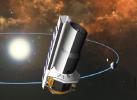
|
-
PIA04497:
-
Help Stamp Out Boring Space Acronyms
Full Resolution:
TIFF
(661.1 kB)
JPEG
(37.43 kB)
|

|
2003-05-09 |
Borrelly
|
Deep Space 1 (DS1)
|
Star Tracker
|
1400x1050x3 |
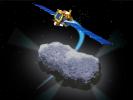
|
-
PIA04496:
-
Artist's Concept of Deep Space 1 Encounter with Comet Borrelly
Full Resolution:
TIFF
(2.038 MB)
JPEG
(88.45 kB)
|

|
2003-01-09 |
Mars
|
2001 Mars Odyssey
|
THEMIS
|
1219x3025x1 |

|
-
PIA04078:
-
A Sea of Lava
Full Resolution:
TIFF
(3.327 MB)
JPEG
(764.3 kB)
|

|
2002-12-21 |
|
Deep Space 1 (DS1)
|
|
1897x1915x3 |

|
-
PIA04238:
-
Deep Space 1's Ion Engine
Full Resolution:
TIFF
(10.19 MB)
JPEG
(308.1 kB)
|

|
2002-12-19 |
Mars
|
2001 Mars Odyssey
|
THEMIS
|
1233x3025x1 |

|
-
PIA04063:
-
Olympus Mons Flows
Full Resolution:
TIFF
(3.498 MB)
JPEG
(842.2 kB)
|

|
2002-12-06 |
Io
|
Galileo
|
Solid-State Imaging
|
4200x3200x3 |
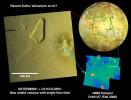
|
-
PIA03887:
-
Potential Source of Sulfur Flow on Io
Full Resolution:
TIFF
(22.3 MB)
JPEG
(947.9 kB)
|

|
2002-11-05 |
Annefrank
|
Stardust
|
Stardust Navigation Camera
|
400x400x3 |
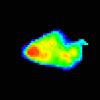
|
-
PIA02886:
-
Annefrank Near Closest Approach
Full Resolution:
TIFF
(29.43 kB)
JPEG
(11.02 kB)
|

|
2002-11-05 |
Annefrank
|
Stardust
|
Stardust Navigation Camera
|
400x400x3 |
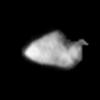
|
-
PIA02885:
-
Stardust Image of Asteroid Annefrank
Full Resolution:
TIFF
(48.97 kB)
JPEG
(4.494 kB)
|

|
2002-06-26 |
Mars
|
2001 Mars Odyssey
|
THEMIS
|
1233x3043x1 |

|
-
PIA03834:
-
Coprates Chasma
Full Resolution:
TIFF
(1.607 MB)
JPEG
(350.6 kB)
|

|
2002-06-17 |
Mars
|
2001 Mars Odyssey
|
THEMIS
|
1231x3025x1 |

|
-
PIA03821:
-
Southeastern Scarp of Olympus Mons
Full Resolution:
TIFF
(1.621 MB)
JPEG
(378 kB)
|

|
2002-06-17 |
Mars
|
2001 Mars Odyssey
|
THEMIS
|
1238x3043x1 |

|
-
PIA03813:
-
Noctis Labyrinthus/Valles Marineris transition
Full Resolution:
TIFF
(1.385 MB)
JPEG
(273.9 kB)
|

|
2002-06-17 |
Mars
|
2001 Mars Odyssey
|
THEMIS
|
1234x3025x1 |

|
-
PIA03810:
-
Tharsis Rise Graben
Full Resolution:
TIFF
(1.57 MB)
JPEG
(409.1 kB)
|

|
2002-06-17 |
Mars
|
2001 Mars Odyssey
|
THEMIS
|
1235x3043x1 |

|
-
PIA03809:
-
Coprates Chasma
Full Resolution:
TIFF
(1.395 MB)
JPEG
(291.4 kB)
|

|
2002-06-04 |
Mars
|
2001 Mars Odyssey
|
THEMIS
|
1207x3061x1 |

|
-
PIA03798:
-
Hadriaca Patera
Full Resolution:
TIFF
(1.952 MB)
JPEG
(582 kB)
|

|
2002-06-04 |
Mars
|
2001 Mars Odyssey
|
THEMIS
|
1236x3097x1 |

|
-
PIA03797:
-
Hesperia Planum
Full Resolution:
TIFF
(2.142 MB)
JPEG
(678.1 kB)
|

|
2002-06-04 |
Mars
|
2001 Mars Odyssey
|
THEMIS
|
1233x2989x1 |

|
-
PIA03793:
-
Wrinkle Ridges and Young Fresh Crater
Full Resolution:
TIFF
(1.237 MB)
JPEG
(351.4 kB)
|

|
2002-05-28 |
Io
|
Galileo
|
Near Infrared Mapping Spectrometer
|
720x480x3 |
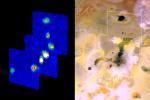
|
-
PIA03533:
-
Amirani Lava Flow on Io
Full Resolution:
TIFF
(606.9 kB)
JPEG
(34.96 kB)
|

|
2002-05-28 |
Io
|
Galileo
|
Solid-State Imaging
|
1174x1024x1 |
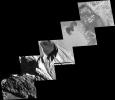
|
-
PIA03527:
-
Detailed View of Mountain and Craters at Tohil, Io
Full Resolution:
TIFF
(227.7 kB)
JPEG
(98.12 kB)
|

|
2002-05-23 |
Mars
|
2001 Mars Odyssey
|
THEMIS
|
1240x3169x1 |

|
-
PIA03790:
-
Pavonis Mons
Full Resolution:
TIFF
(1.237 MB)
JPEG
(269 kB)
|

|
2002-05-23 |
Mars
|
2001 Mars Odyssey
|
THEMIS
|
1237x3151x1 |

|
-
PIA03784:
-
Crustal Fractures of Ophir Planum
Full Resolution:
TIFF
(1.52 MB)
JPEG
(298.5 kB)
|

|
2002-05-23 |
Mars
|
2001 Mars Odyssey
|
THEMIS
|
1238x3043x1 |

|
-
PIA03783:
-
Noctis Labyrinthus
Full Resolution:
TIFF
(1.263 MB)
JPEG
(270.1 kB)
|

|
2002-05-21 |
Mars
|
2001 Mars Odyssey
|
THEMIS
|
1228x3025x1 |

|
-
PIA03763:
-
Olympus Mons Lava Flows
Full Resolution:
TIFF
(1.84 MB)
JPEG
(623.5 kB)
|

|
2002-02-27 |
Jupiter
|
Cassini-Huygens
|
Imaging Radar
|
1700x2200x3 |

|
-
PIA03478:
-
Inner Radiation Belts of Jupiter
Full Resolution:
TIFF
(4.613 MB)
JPEG
(189.5 kB)
|

|
2002-02-27 |
Jupiter
|
Cassini-Huygens
|
|
1288x728x3 |
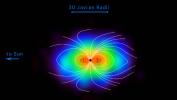
|
-
PIA03476:
-
Jupiter's Magnetosphere Made Visible
Full Resolution:
TIFF
(1.032 MB)
JPEG
(48.9 kB)
|

|
2001-11-29 |
Callisto
|
Galileo
|
Solid-State Imaging
|
1280x774x1 |
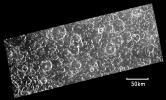
|
-
PIA02593:
-
Opposite Side of Callisto from Valhalla Impact
Full Resolution:
TIFF
(609.1 kB)
JPEG
(121.2 kB)
|

|
2001-11-27 |
Io
|
Galileo
|
Solid-State Imaging
|
800x623x3 |
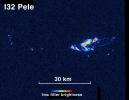
|
-
PIA02596:
-
Io's Pele Glowing in the Dark
Full Resolution:
TIFF
(471.9 kB)
JPEG
(98.62 kB)
|

|
2001-07-21 |
Saturn
|
Hubble Space Telescope
|
WFPC2
|
3000x1500x3 |
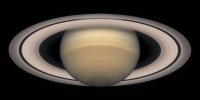
|
-
PIA03162:
-
A Change of Seasons on Saturn - October, 2000
Full Resolution:
TIFF
(5.81 MB)
JPEG
(156.4 kB)
|

|
2001-07-21 |
Saturn
|
Hubble Space Telescope
|
WFPC2
|
3000x1500x3 |
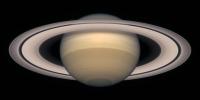
|
-
PIA03161:
-
A Change of Seasons on Saturn - October, 1999
Full Resolution:
TIFF
(13.51 MB)
JPEG
(150.5 kB)
|

|
2001-07-21 |
Saturn
|
Hubble Space Telescope
|
WFPC2
|
3000x1500x3 |
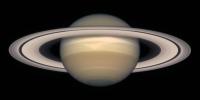
|
-
PIA03160:
-
A Change of Seasons on Saturn - October, 1998
Full Resolution:
TIFF
(4.54 MB)
JPEG
(140.8 kB)
|

|
2001-07-21 |
Saturn
|
Hubble Space Telescope
|
WFPC2
|
1152x576x3 |
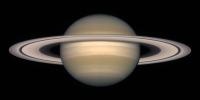
|
-
PIA03159:
-
A Change of Seasons on Saturn - October, 1997
Full Resolution:
TIFF
(695.1 kB)
JPEG
(27.48 kB)
|

|
2001-07-21 |
Saturn
|
Hubble Space Telescope
|
WFPC2
|
3000x1500x3 |
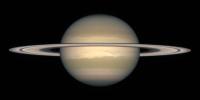
|
-
PIA03158:
-
A Change of Seasons on Saturn - October, 1996
Full Resolution:
TIFF
(3.053 MB)
JPEG
(120 kB)
|

|
2001-07-21 |
Saturn
|
Hubble Space Telescope
|
WFPC2
|
3000x2270x3 |
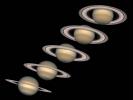
|
-
PIA03156:
-
A Change of Seasons on Saturn
Full Resolution:
TIFF
(4.312 MB)
JPEG
(220 kB)
|

|
2001-03-29 |
|
|
|
4500x5600x3 |

|
-
PIA03153:
-
Solar System Montage - High Resolution 2001 Version
Full Resolution:
TIFF
(23.45 MB)
JPEG
(955.2 kB)
|

|
2001-03-29 |
Io
|
Cassini-Huygens
Galileo
|
Solid-State Imaging
|
1100x900x3 |
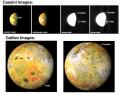
|
-
PIA02588:
-
Galileo and Cassini Image Two Giant Plumes on Io
Full Resolution:
TIFF
(1.374 MB)
JPEG
(96.56 kB)
|

|
2001-02-23 |
Io
|
Galileo
|
Solid-State Imaging
|
4000x2500x3 |
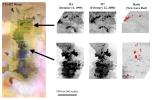
|
-
PIA02585:
-
Amirani's Big Lava Flow on Io
Full Resolution:
TIFF
(12.55 MB)
JPEG
(619.1 kB)
|

|
2001-02-09 |
Earth
|
Landsat
|
|
439x593x3 |

|
-
PIA03212:
-
Barringer Meteor Crater, Arizona
Full Resolution:
TIFF
(912 kB)
JPEG
(53.7 kB)
|

|
2000-12-23 |
Jupiter
|
Cassini-Huygens
|
Imaging Science Subsystem
|
747x731x3 |
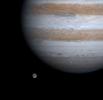
|
-
PIA02862:
-
Ganymede and Jupiter
Full Resolution:
TIFF
(732.8 kB)
JPEG
(26.34 kB)
|

|
2000-12-21 |
Jupiter
|
Cassini-Huygens
|
Imaging Science Subsystem
|
846x1016x3 |

|
-
PIA02861:
-
Europa and Callisto under the Watchful Gaze of Jupiter
Full Resolution:
TIFF
(728 kB)
JPEG
(31 kB)
|

|
2000-12-20 |
Jupiter
|
Cassini-Huygens
|
Imaging Science Subsystem
|
1020x986x3 |
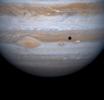
|
-
PIA02860:
-
Io in Front of Jupiter
Full Resolution:
TIFF
(1.728 MB)
JPEG
(56.76 kB)
|

|
2000-11-06 |
|
|
|
4206x3306x3 |
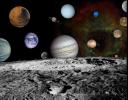
|
-
PIA02973:
-
The New Solar System
Full Resolution:
TIFF
(23.03 MB)
JPEG
(1.479 MB)
|

|
2000-10-26 |
Jupiter
|
Galileo
|
Near Infrared Mapping Spectrometer
|
2769x1542x3 |
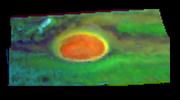
|
-
PIA02569:
-
Ammonia Ice near Jupiter's Great Red Spot
Full Resolution:
TIFF
(7.819 MB)
JPEG
(148.5 kB)
|

|
2000-10-26 |
Io
|
Galileo
|
Solid-State Imaging
|
413x900x3 |

|
-
PIA02567:
-
Giant Lava Flow on Io, in Color
Full Resolution:
TIFF
(1.187 MB)
JPEG
(44.4 kB)
|

|
2000-10-26 |
Io
|
Galileo
|
Solid-State Imaging
|
1152x483x3 |
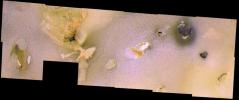
|
-
PIA02566:
-
Io's Chain of Craters
Full Resolution:
TIFF
(1.389 MB)
JPEG
(93.06 kB)
|

|
2000-05-23 |
Mimas
|
Voyager
|
VG ISS - Narrow Angle
|
363x403x1 |

|
-
PIA02266:
-
Mimas - Large Impact Structure
Full Resolution:
TIFF
(12.36 kB)
JPEG
(3.719 kB)
|

|
2000-05-13 |
Mars
|
Mars Global Surveyor (MGS)
|
Mars Orbiter Camera (MOC)
|
836x2986x1 |

|
-
PIA02343:
-
Layers and Boulders in Crater Wall, Nepenthes Mensae Region
Full Resolution:
TIFF
(2.206 MB)
JPEG
(480.7 kB)
|

|
2000-04-11 |
Mars
|
Mars Global Surveyor (MGS)
|
Mars Orbiter Camera (MOC)
|
2493x972x3 |
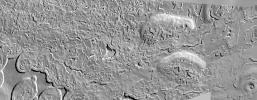
|
-
PIA02391:
-
High-Resolution South Polar Cap Mosaics
Full Resolution:
TIFF
(1.84 MB)
JPEG
(284.7 kB)
|

|
2000-04-11 |
Mars
|
Mars Global Surveyor (MGS)
|
Mars Orbiter Camera (MOC)
|
2496x972x1 |
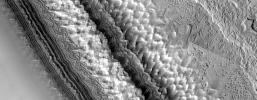
|
-
PIA02390:
-
High-Resolution South Polar Cap Mosaics
Full Resolution:
TIFF
(2.268 MB)
JPEG
(248.1 kB)
|

|
2000-02-11 |
Masursky
|
Cassini-Huygens
|
ISS - Narrow Angle
|
220x220x1 |
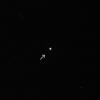
|
-
PIA02449:
-
Masursky
Full Resolution:
TIFF
(13.38 kB)
JPEG
(1.381 kB)
|

|
1999-12-17 |
Io
|
Galileo
|
Solid-State Imaging
|
717x653x3 |
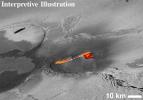
|
-
PIA02525:
-
Interpreted Lava Fountains on Io
Full Resolution:
TIFF
(1.3 MB)
JPEG
(124.8 kB)
|

|
1999-12-17 |
Io
|
Galileo
|
Solid-State Imaging
|
1152x280x1 |

|
-
PIA02519:
Lava Fountains on Io
Full Resolution:
TIFF
(139.9 kB)
JPEG
(56.66 kB)
|

|
1999-12-10 |
Earth
|
Voyager
|
VG ISS - Narrow Angle
|
200x200x3 |
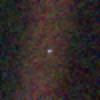
|
-
PIA02228:
-
Solar System Portrait - Earth
Full Resolution:
TIFF
(117.8 kB)
JPEG
(4.977 kB)
|

|
1999-12-07 |
Mercury
|
Mariner Venus Mercury (Mariner 10)
|
|
1780x2414x1 |

|
-
PIA02439:
-
Caloris Basin
Full Resolution:
TIFF
(4.033 MB)
JPEG
(822.8 kB)
|

|
1999-12-01 |
Protostellar Disk L1157
|
|
Owens Valley Millimeter Array
|
787x1019x3 |

|
-
PIA04211:
-
Protostellar Disk L1157
Full Resolution:
TIFF
(2.409 MB)
JPEG
(34.08 kB)
|

|
1999-12-01 |
Globular cluster M22
|
Hubble Space Telescope
|
WFPC2
|
514x600x3 |

|
-
PIA04202:
-
Globular Cluster M22
Full Resolution:
TIFF
(926.4 kB)
JPEG
(94.12 kB)
|

|
1999-11-19 |
Io
|
Galileo
|
Near Infrared Mapping Spectrometer
|
1157x1241x3 |

|
-
PIA02514:
-
Loki as viewed by Galileo NIMS
Full Resolution:
TIFF
(638.9 kB)
JPEG
(92.45 kB)
|

|
1999-10-08 |
Io
|
Galileo
|
Solid-State Imaging
|
336x436x3 |

|
-
PIA02506:
-
Amirani-Maui: Longest Known Active Lava Flow in the Solar System
Full Resolution:
TIFF
(392.2 kB)
JPEG
(21.24 kB)
|

|
1999-10-08 |
Io
|
Galileo
|
Solid-State Imaging
|
398x398x3 |
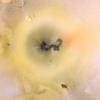
|
-
PIA02505:
-
Close-up of Prometheus, Io (color)
Full Resolution:
TIFF
(360.9 kB)
JPEG
(17.74 kB)
|

|
1999-10-07 |
Callisto
|
Galileo
|
Solid-State Imaging
|
1440x669x1 |
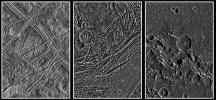
|
-
PIA01656:
-
Europa, Ganymede, and Callisto: Surface Comparison at High Spatial Resolution
Full Resolution:
TIFF
(1.017 MB)
JPEG
(271.6 kB)
|

|
1999-10-07 |
Callisto
|
Galileo
|
Solid-State Imaging
|
449x449x1 |
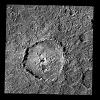
|
-
PIA01657:
-
Crater Tindr on Callisto - an Oblique Impact?
Full Resolution:
TIFF
(157 kB)
JPEG
(67.49 kB)
|

|
1999-08-24 |
Jupiter
|
Hubble Space Telescope
|
WFPC2
|
2401x2870x3 |

|
-
PIA01593:
-
Hubble Views Ancient Storm in the Atmosphere of Jupiter - Montage
Full Resolution:
TIFF
(14.35 MB)
JPEG
(423.5 kB)
|

|
1999-08-24 |
Jupiter
|
Hubble Space Telescope
|
WFPC2
|
321x321x3 |
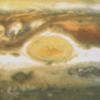
|
-
PIA02402:
-
Hubble Views Ancient Storm in the Atmosphere of Jupiter - June, 1999
Full Resolution:
TIFF
(258.3 kB)
JPEG
(11.79 kB)
|

|
1999-08-24 |
Jupiter
|
Hubble Space Telescope
|
WFPC2
|
321x321x3 |
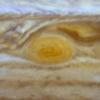
|
-
PIA02401:
-
Hubble Views Ancient Storm in the Atmosphere of Jupiter - April, 1997
Full Resolution:
TIFF
(217.3 kB)
JPEG
(10.36 kB)
|

|
1999-08-24 |
Jupiter
|
Hubble Space Telescope
|
WFPC2
|
321x321x3 |
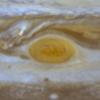
|
-
PIA02400:
-
Hubble Views Ancient Storm in the Atmosphere of Jupiter - October, 1996
Full Resolution:
TIFF
(219.7 kB)
JPEG
(9.823 kB)
|

|
1999-08-24 |
Jupiter
|
Hubble Space Telescope
|
WFPC2
|
321x321x3 |
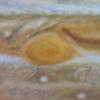
|
-
PIA01599:
-
Hubble Views Ancient Storm in the Atmosphere of Jupiter - October, 1995
Full Resolution:
TIFF
(245 kB)
JPEG
(9.032 kB)
|

|
1999-08-24 |
Jupiter
|
Hubble Space Telescope
|
WFPC2
|
321x321x3 |
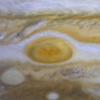
|
-
PIA01598:
-
Hubble Views Ancient Storm in the Atmosphere of Jupiter - February, 1995
Full Resolution:
TIFF
(218.9 kB)
JPEG
(9.833 kB)
|

|
1999-08-24 |
Jupiter
|
Hubble Space Telescope
|
WFPC2
|
321x321x3 |
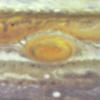
|
-
PIA01597:
-
Hubble Views Ancient Storm in the Atmosphere of Jupiter - August, 1994
Full Resolution:
TIFF
(285.2 kB)
JPEG
(10.9 kB)
|

|
1999-08-24 |
Jupiter
|
Hubble Space Telescope
|
WFPC2
|
321x321x3 |
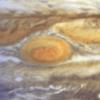
|
-
PIA01596:
-
Hubble Views Ancient Storm in the Atmosphere of Jupiter - July, 1994
Full Resolution:
TIFF
(301.3 kB)
JPEG
(12.4 kB)
|

|
1999-08-24 |
Jupiter
|
Hubble Space Telescope
|
WFPC2
|
321x321x3 |
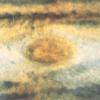
|
-
PIA01595:
-
Hubble Views Ancient Storm in the Atmosphere of Jupiter - May, 1992
Full Resolution:
TIFF
(306.5 kB)
JPEG
(13.83 kB)
|

|
1999-08-24 |
Jupiter
|
Hubble Space Telescope
|
WFPC2
|
718x716x3 |
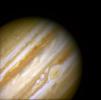
|
-
PIA01594:
-
Hubble Views Ancient Storm in the Atmosphere of Jupiter - Full Disk
Full Resolution:
TIFF
(1.127 MB)
JPEG
(30.32 kB)
|

|
1999-08-23 |
Mars
|
Hubble Space Telescope
|
WFPC2
|
3001x2070x3 |
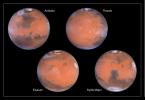
|
-
PIA01587:
-
A Closer Hubble Encounter With Mars - 4 Views
Full Resolution:
TIFF
(7.258 MB)
JPEG
(270.4 kB)
|

|
1999-08-23 |
Mars
|
Hubble Space Telescope
|
WFPC2
|
800x800x3 |
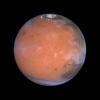
|
-
PIA01590:
-
A Closer Hubble Encounter With Mars - Tharsis
Full Resolution:
TIFF
(783.2 kB)
JPEG
(26.36 kB)
|

|
1999-07-25 |
Triton
|
Voyager
|
VG ISS - Narrow Angle
|
795x795x1 |
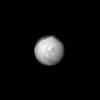
|
-
PIA01994:
-
Triton - Neptune's Largest Satellite
Full Resolution:
TIFF
(51.79 kB)
JPEG
(12.02 kB)
|

|
1999-05-21 |
Saturn
|
Voyager
|
VG ISS - Narrow Angle
|
894x569x3 |
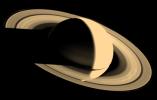
|
-
PIA01969:
-
Saturn and its Rings
Full Resolution:
TIFF
(142 kB)
JPEG
(29.44 kB)
|

|
1999-05-21 |
Neptune
|
Hubble Space Telescope
|
WFPC2
|
720x730x3 |

|
-
PIA01542:
-
Neptune's Stormy Disposition
Full Resolution:
TIFF
(610.8 kB)
JPEG
(37.55 kB)
|

|
1999-05-03 |
|
|
|
2000x2445x3 |

|
-
PIA01341:
-
Solar System Montage (Updated)
Full Resolution:
TIFF
(4.618 MB)
JPEG
(206.1 kB)
|

|
1999-01-18 |
Europa
|
Galileo
|
Solid-State Imaging
|
1192x1636x3 |

|
-
PIA01669:
-
Model of Europa's Subsurface Structure
Full Resolution:
TIFF
(1.953 MB)
JPEG
(174 kB)
|

|
1999-01-18 |
Io
|
Galileo
|
Solid-State Imaging
|
800x800x3 |
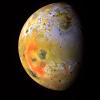
|
-
PIA01667:
-
Io's Pele Hemisphere After Pillan Changes
Full Resolution:
TIFF
(1.347 MB)
JPEG
(56.68 kB)
|

|
1999-01-18 |
Europa
|
Galileo
|
Solid-State Imaging
|
1050x520x3 |
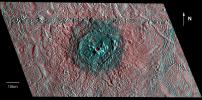
|
-
PIA01665:
-
Red-Blue Three Dimensional View of Pwyll crater
Full Resolution:
TIFF
(1.248 MB)
JPEG
(152 kB)
|

|
1999-01-05 |
Tethys
|
Voyager
|
VG ISS - Narrow Angle
|
260x228x1 |
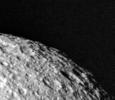
|
-
PIA01386:
-
High Resolution View of Tethys
Full Resolution:
TIFF
(51.78 kB)
JPEG
(9.486 kB)
|

|
1998-12-07 |
Callisto
|
Galileo
|
Solid-State Imaging
|
1152x884x3 |
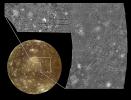
|
-
PIA01649:
-
The Valhalla Multi-ring Structure on Callisto
Full Resolution:
TIFF
(1.477 MB)
JPEG
(175.5 kB)
|

|
1998-11-03 |
Ida
|
Galileo
|
Solid-State Imaging
|
580x400x3 |
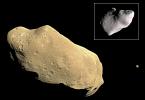
|
-
PIA00333:
-
Asteroid Ida and its Satellite Dactyl in Enhanced Color
Full Resolution:
TIFF
(254.4 kB)
JPEG
(19.73 kB)
|

|
1998-10-14 |
Jupiter
|
Galileo
Hubble Space Telescope
|
|
850x950x3 |

|
-
PIA01477:
-
Jupiter's White Ovals
Full Resolution:
TIFF
(648.3 kB)
JPEG
(32.09 kB)
|

|
1998-10-13 |
Callisto
|
Galileo
|
Solid-State Imaging
|
800x799x1 |
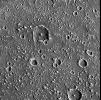
|
-
PIA01631:
-
So few Small Craters on Callisto
Full Resolution:
TIFF
(528.1 kB)
JPEG
(188.6 kB)
|

|
1998-09-26 |
Titan
|
Hubble Space Telescope
|
WFPC2
|
600x750x3 |

|
-
PIA01465:
-
Hubble Observes Surface of Titan
Full Resolution:
TIFF
(564.6 kB)
JPEG
(37.66 kB)
|

|
1998-09-15 |
J Rings
|
Galileo
|
Solid-State Imaging
|
2663x1418x1 |
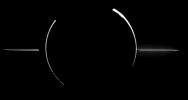
|
-
PIA01621:
-
Jupiter's Ring System
Full Resolution:
TIFF
(145.1 kB)
JPEG
(62.26 kB)
|

|
1998-08-02 |
Uranus
|
Hubble Space Telescope
|
WFPC2
|
737x256x1 |
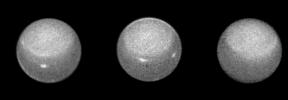
|
-
PIA01283:
-
Hubble the Rotation of Uranus
Full Resolution:
TIFF
(68.48 kB)
JPEG
(13.52 kB)
|

|
1998-08-02 |
Uranus
|
Hubble Space Telescope
|
WFPC2
|
600x800x1 |

|
-
PIA01282:
-
Hubble Observes the Planet Uranus
Full Resolution:
TIFF
(192.2 kB)
JPEG
(49.21 kB)
|

|
1998-08-02 |
Uranus
|
Hubble Space Telescope
|
WFPC2
|
490x512x1 |

|
-
PIA01281:
-
Hubble Observes the Moons and Rings of Uranus
Full Resolution:
TIFF
(15.63 kB)
JPEG
(9.077 kB)
|

|
1998-06-08 |
Mars
|
Viking
|
|
3532x2763x3 |
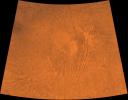
|
-
PIA00409:
-
Alba Patera
Full Resolution:
TIFF
(14.73 MB)
JPEG
(760.6 kB)
|

|
1998-06-08 |
Mars
|
Viking
|
|
7700x9203x3 |

|
-
PIA00408:
-
Tharsis
Full Resolution:
TIFF
(127.9 MB)
JPEG
(7.091 MB)
|

|
1998-06-08 |
Saturn
|
Voyager
|
|
860x1230x3 |

|
-
PIA00400:
-
Saturn and 4 Icy Moons in Natural Color
Full Resolution:
TIFF
(1.061 MB)
JPEG
(47.25 kB)
|

|
1998-06-08 |
Mars
|
Viking
|
Visual Imaging Subsystem - Camera A
|
6787x6787x3 |
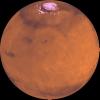
|
-
PIA00197:
-
Center is at Latitude 30 Degrees North, Longitude 150 Degrees
Full Resolution:
TIFF
(58.79 MB)
JPEG
(1.74 MB)
|

|
1998-06-05 |
Mars
|
Viking
|
Visual Imaging Subsystem - Camera A
|
7170x4991x3 |
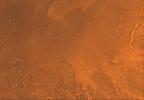
|
-
PIA00168:
-
MC-8 Amazonis Region
Full Resolution:
TIFF
(60.79 MB)
JPEG
(3.337 MB)
|

 Planetary Data System
Planetary Data System


































































































